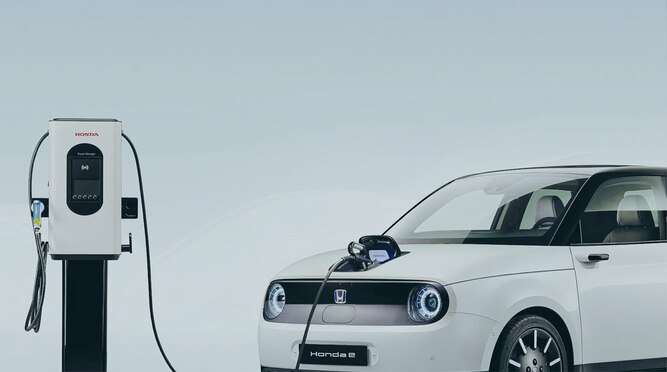Biodiversity Conservation
Biodiversity Guidelines
Honda has long worked to conserve biological diversity based on a recognition of the impact its business activities can have on it. In 2011, we created the Honda Biodiversity Guidelines with the belief that minimizing the environmental impact of our operations and products represents the greatest contribution we can make to protecting life in all its forms. The guidelines specify our priorities in this endeavor, including the development of environmental technologies, initiatives in our operations, and cooperation with communities.
We recognize the emissions of greenhouse gases (GHGs) and various other pollutants as the greatest threat to biodiversity. Consequently, we have set priorities under the guidelines and are working systematically to minimize them.
Honda Biodiversity Guidelines
Basic Statement
We recognize, under the Honda Environment Statement, that biodiversity conservation initiatives are an essential part of our commitment to the preservation of the global environment. We will continue to work toward harmony between this commitment and our activities.
Priority Activities
-
Development of Environmental Technology
We will contribute to the conservation of biodiversity by developing and disseminating technologies for fuel-efficient vehicles, next-generation cars, and energy-production and other technologies for the reduction of environmental impacts.
-
Initiatives Based on Corporate Activities
We will work to reduce environmental impacts and ensure the effective use of resources through efficiency improvements.
-
Cooperation with Communities
We will implement community-based activities in cooperation with stakeholders, using expertise accumulated by Honda through its initiatives to protect ecosystems, such as the Community Forests and Hello Woods initiatives.
-
Disclosure and Sharing of Information
We will share information with society by disclosing the outcomes of our activities.
Established in May 2011
Importance of Biodiversity Conservation and IPBES Report Suggestions
Biodiversity is fundamental to the well-being of humanity, a healthy planet, and the economic prosperity of all people. Not only do we depend on biodiversity, but also biodiversity underpins all systems of life on Earth. The IPBES*1 Global Assessment Report on Biodiversity and Ecosystem Services, published in 2020, suggests that many of the approximately one million species face extinction within the next few decades. In June 2021, the G7 Cornwall Summit adopted the G7 2030 Nature Compact and declared the need for a nature-positive approach to reverse nature loss by 2030.
In operating its business, Honda benefits from natural resources. In addition to the procurement of raw materials, Honda depends on and affects a great deal of natural capital throughout its value chain, from research and development to manufacturing, use, and disposal.
Honda’s basic approach is defined as follows: “We recognize, under Honda’s Environment Statement, that biodiversity conservation initiatives are an essential part of our commitment to the preservation of the global environment. We will continue to work toward harmony between this commitment and our activities.”
Honda also recognizes the need for biodiversity-conscious actions in its relationship with nature. Based on this recognition, the Company carried out treeplanting and water-recycling initiatives at its plants in the 1960s and launched the Community Forest program in 1976. In 2011, the Company established the Honda Biodiversity Guidelines. In line with the Guidelines, Honda is working to avoid or minimize impacts on nature, including air, water, and biodiversity, as well as to conserve and restore them. In addition, the Company conducts biodiversity impact assessments.
- Intergovernmental Science-Policy Platform on Biodiversity and Ecosystem Services
Priority Analysis for Biodiversity Conservation
Biodiversity Assessment around the Company’s Production Sites
Honda assesses the potential for its business activities to impact biodiversity using the Integrated Biodiversity Assessment Tool (IBAT), a biodiversity assessment tool.
The Company surveys its own 86 production sites around the world within a 50 km radius of each site to determine their proximity to areas inhabited by endangered species on the IUCN Red List.
In order to conduct specific biodiversity efforts, Honda uses indicators in IBAT such as the KBA*2, WDPA*3, IUCN*4 Red List of Threatened Species, and STAR*5 to conduct integrated assessments of the biodiversity risk of the production sites.
Honda will continue to identify priority sites and consider specific efforts to conserve biodiversity.
Honda assesses and identifies endangered species and priority sites in cooperation with BirdLife International Tokyo, a general incorporated association specializing in biodiversity assessment.
Endangered species assessment around the Company’s production sites
| Number of species (total) | Endangered species category | ||
|---|---|---|---|
| Region | CR (Critically Endangered) |
EN (Endangered) |
VU (Vulnerable) |
| Japan | 60 | 292 | 607 |
| North America | 75 | 187 | 294 |
| Europe | 62 | 136 | 305 |
| Asia-Pacific excluding Japan and China | 647 | 1,547 | 4,538 |
| China | 189 | 404 | 755 |
| South America | 29 | 97 | 212 |
| Africa & Latin America | 36 | 64 | 90 |
| Total | 1,098 | 2,727 | 6,801 |
Assessment of biodiversity priorities at the Company’s production sites

Biodiversity Assessment of Products
Products are made from a variety of materials, some of which may have an impact on biodiversity. Honda is therefore engaged in the primary assessment of the impact of materials used in its products on biodiversity. Based on the assessment results, the Company will conduct a more detailed analysis of materials that have a large potential impact, and consider ways to reduce the impact of its products on biodiversity.
Results of the primary assessment of biodiversity impacts

Honda’s Initiatives
See below for Honda’s Biodiversity Conservation Initiatives
- Key Biodiversity Areas
- World Database on Protected Areas
- International Union for Conservation of Nature
- Species Threat Abatement and Restoration Metric


